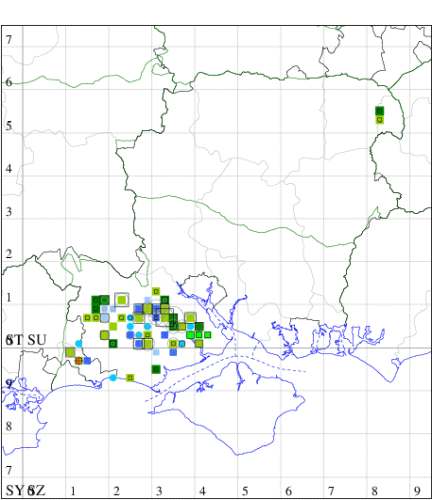Purple-bordered Gold
Idaea muricata
Checklist Number70.002 [B&F: 1698]
Verification
Record will normally be accepted but photo evidence may be required - check with CMR if not sure of identity
Classification
| Family: | Geometridae |
| Subfamily: | Sterrhinae |
| Genus: | Idaea |
| Species: | muricata |
| Authority: | (Hufnagel, 1767) |
Nationally scarce (Nb) in damp heathland, mosses, bogs, fens and other damp areas in parts of England. In Hampshire fairly frequent in the New Forest, on boggy heathland; away from there, it is known from the north-east where, in 1957, it was reported as being fairly common in the Farnborough area and was reported in the Rushmoor district in 2011 and again in 2022/2023. Not recorded from the Isle of Wight to date (where there is little suitable habitat). Wingspan 18-20 mm. Small size and day-flying habits could result in confusion with pyralids such as Gold Triangle Hypsopygia costalis and Pyrausta sanguinalis. Larva feeds on Marsh Cinquefoil.


The abundance in each month is indicated as follows:
 No records
No records Very occasional
Very occasional Irregular
Irregular Uncommon
Uncommon Off-peak, but not unusual
Off-peak, but not unusual Off-peak, but not unusual
Off-peak, but not unusual Main flight time
Main flight time| J | F | M | A | M | J | J | A | S | O | N | D | |
|---|---|---|---|---|---|---|---|---|---|---|---|---|
| Adult |  |  |  |  |  |  |  |  |  |  |  |  |
| Larval |  |  |  |  |  |  |  |  |  |  |  |  |


